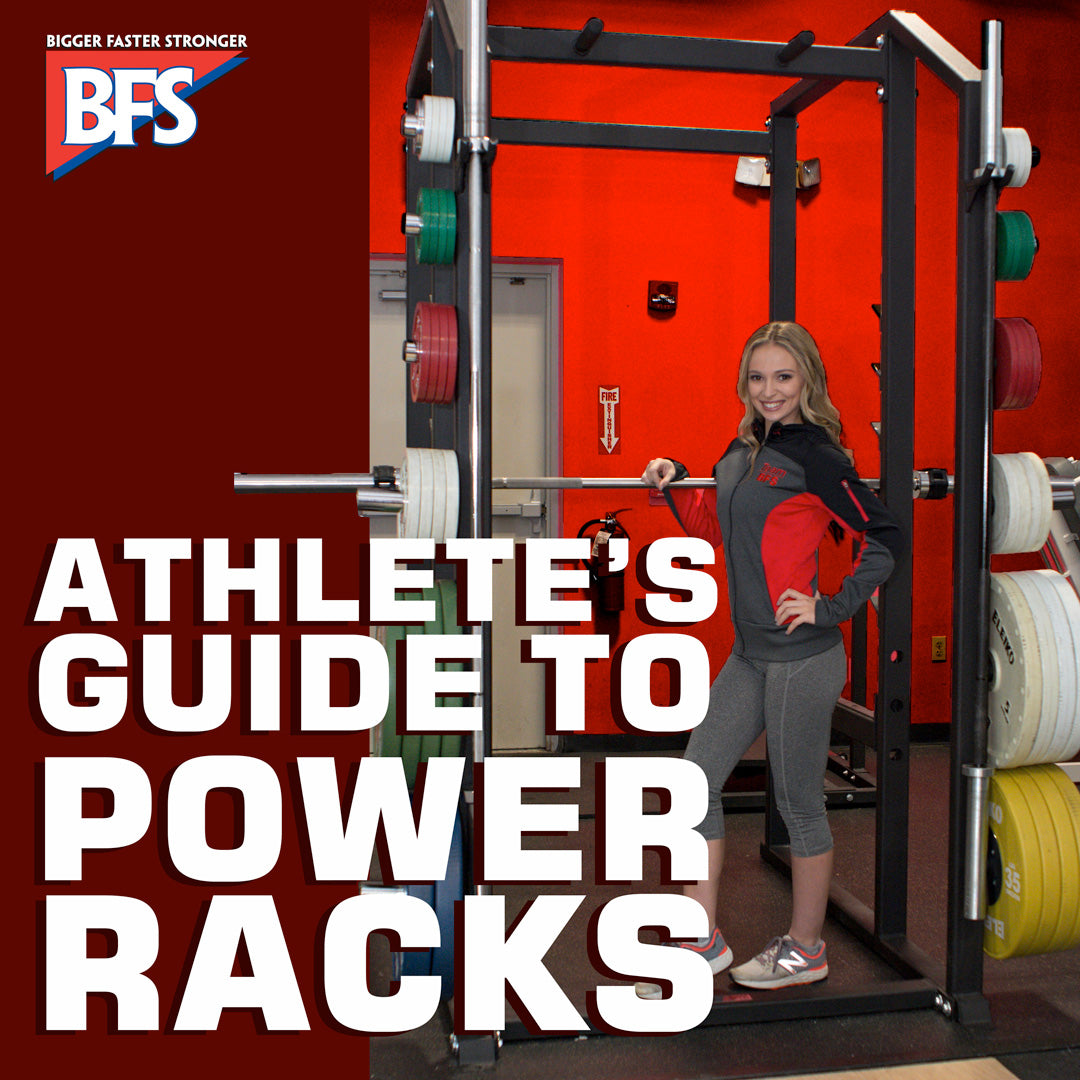An Athlete’s Guide to Power Racks

Other than being used as an apparatus to rest a barbell on for squats, the power rack is often overlooked in most gyms. The fact is, the power rack enables you to safely perform many other core exercises and experiment with many unique training methods that can help you add muscle, get stronger, or become more powerful. That said, what makes a good power rack?
Starting with the basics, a power rack consists of four vertical posts linked together to form a cage. The posts have holes drilled through them to insert barbell hooks to hold a barbell when not in use. They also have safety rods that can be raised or lowered to catch a missed lift so that the weight only falls a few inches, rather than hitting the floor. A typical size for a power rack is 4-feet wide, 4-feet long, and 7-feet tall. Colleges and professional athletic programs, however, usually prefer even larger and heavier racks (such as those in the BFS D1 Line). This design gives the trainee enough room to perform squats without hitting the posts.

A portable squat rack will elevate a barbell but doesn’t have safety rods. If a lifter misses the weight, without safety rods you must have alert spotters have to catch it. Yes, Olympic-style weightlifters often squat with portable squat rack and use bumper plates, such that they can throw the weight off their shoulders if it’s too heavy. However, dumping a weight in this manner is a skill that must be taught and practiced, and to protect the floor the athlete needs to be squatting on a lifting platform.
Because extremely heavy weights can be used with the squat, BFS recommends that this lift be performed with three spotters. When squats are performed in a power rack, however, the lifter knows that even if one or more of their spotter fails, the bar will be caught by the safety rods (but again, BFS believes that spotters should always be used). Knowing that heavy weights can be used safely, athletes can push themselves even harder. Likewise, with a bench press, the supports can be set lower enough to enable the athlete to touch the chest, but high enough to protect the neck should an athlete suddenly lose their grip. The bench press is the most dangerous lift in the weight room, but serious injuries may be avoided with the proper use of a power rack.
In addition to providing safety, the rods can also be positioned so that the athlete can perform partial movements through specific ranges of motion. Let’s say an athlete has difficulty completing a deadlift after the bar passes their knees. He or she can set the safety rods at knee level (or slightly below knee-level), and perform the exercise from this starting point to focus on this portion of the lift. A workout could consider of regular deadlifts, then a few sets of these partial movements to focus on their weakness.
For advanced lifters, heavy supports in the power rack are used raise the shutdown threshold of the Golgi tendon organ (GTO). The GTO is a tension/stretch receptor that shuts down a muscle when it senses excessive tension, such as when an arm wrestling suddenly gives up during a match. Here is an example of how a lifter might perform heavy supports.
After a warm-up of several sets of bench presses, a lifter would adjust the safety rods about 2 inches below the lockout position of a core lift, such as a squat. The weight used would be increased to about 90-110 percent of their maximum for 1-repetition. The lifter would remove the weight from the supports (with the help of spotters), hold the bar motionless for about 15 seconds, then replace the weight with the help of spotters. After this set, the lifter would go back to their regular bench presses. Again, this is an advanced training method, and should only be performed under the guidance of a strength coach experienced with this training method.
BFS offers a variety of power racks, from bare-to-the-bones squat cages to the high-end D1 Line with accessories such as band attachments and chin-up bars. The most economical power racks do not have plate holder attachments, but these are a valuable addition if your space is limited – plus, you would still have to purchase a portable weight tree for your plates so the savings are minimal. Likewise, having a platform attached to the power rack enables you to perform all your core exercises, including power cleans and deadlifts, in “do-it-all” station.
 One of the unique features available on many BFS power racks is pre-set bar supports, a feature designed by BFS clinician Jim Brown. Brown is a legendary BFS clinician who wanted to find a way to increase the “density” of his workouts, getting more work done in less time. What he found was that one issue that was slowing down his workouts was adjusting the bar supports in the power rack. Working with the BFS manufacturing team, Brown came up was a power rack with a series of pre-set bar jokes on the forward posts. This design eliminated the need to move the bar supports, saving time.
One of the unique features available on many BFS power racks is pre-set bar supports, a feature designed by BFS clinician Jim Brown. Brown is a legendary BFS clinician who wanted to find a way to increase the “density” of his workouts, getting more work done in less time. What he found was that one issue that was slowing down his workouts was adjusting the bar supports in the power rack. Working with the BFS manufacturing team, Brown came up was a power rack with a series of pre-set bar jokes on the forward posts. This design eliminated the need to move the bar supports, saving time.

If athletic fitness is the goal, a power rack is a must as it enables athletes to safely perform heavy duty exercises with a variety of training methods. BFS has been building quality power racks to fit any budget for over 40 years, and we think we’ve got it right.

Comments
Lee Mccormick said:
example of power rack workout plan
Gymequipmentcenter said:
It was useful.